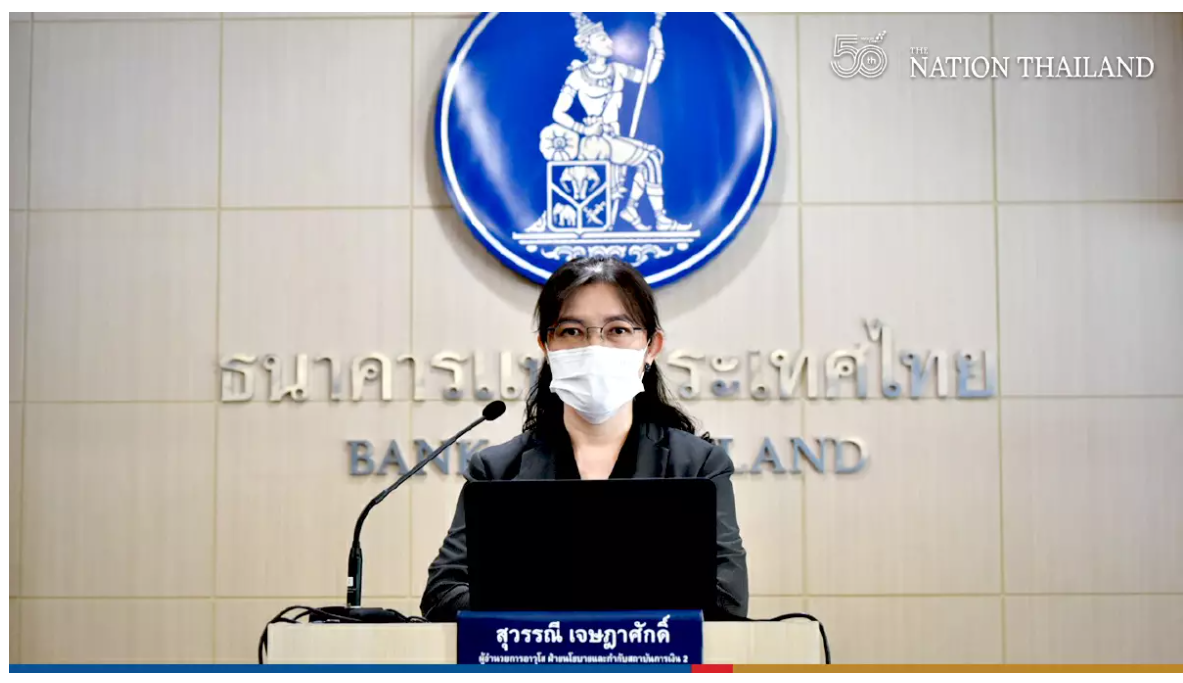Thai banking system robust despite Covid crisis: central bank
The Bank of Thailand has earmarked more than 8.23 billion baht for the rehabilitation of 4,254 loans, that have suffered due to rising economic uncertainties from the latest wave of Covid-19 infections.
Suwannee Jatsadasak, senior director of the central bank, said the Thai banking system’s performance in the first quarter shows that the banking system is resilient with high levels of capital fund, loan loss provision and liquidity to accommodate loan demands and weather rising economic concerns.
Credit assistance measures, coupled with revisions to rules on loan classification and provisioning helped stop the quality of bank loans from deteriorating.
The Thai banking system’s capital fund stood at 3.02 trillion baht – equivalent to a capital adequacy ratio of 20 per cent. Loan-loss provisions remained high at 823.4 billion baht, with NPL coverage ratio of 149.7 per cent. The liquidity coverage ratio came in at 186.5 per cent.
In the first quarter of 2021, banks’ overall loan growth was 3.8 per cent year-on-year, down from 5.1 per cent in the previous quarter.
Corporate loan (64.3 per cent of total loan) expanded at 3 per cent year-on-year. Large corporate loan growth was moderate following an acceleration in loan usage last year due to needed liquidity and funding switch from corporate bonds. SME loans expanded quarter-on-quarter, resulting in a smaller year-on-year contraction – even when excluding contributions from the soft loan scheme.
Consumer loans (35.7 per cent of total loans) grew 5.3 per cent year-on-year, higher than the 4.4 per cent expansion in the previous quarter. This was mainly driven by mortgage lending, consistent with increasing demand especially for low-rise residential properties, together with promotional campaigns from developers and a reduction in government fees. Meanwhile, auto loans grew marginally in line with a contraction in domestic car sales from the previous year. Credit-card loans expanded compared to the first quarter of last year when consumer spending was affected by the early stage of the Covid-19 outbreak. Personal loans rose at a higher rate due to households’ need for liquidity, partly reflected in an increase in unsecured loans through online platforms and cash cards.
Bank loan quality in the first quarter of 2021 continued to be supported by financial assistance as well as revisions to rules on loan classification. As a result, gross non-performing loans (NPL)s rose slightly to 537.1 billion baht, equivalent to an NPL ratio of 3.10 per cent. Meanwhile, the ratio of loans with a significant increase in credit risk (SICR) to total loans stood at 6.41 per cent, down from 6.62 per cent in the previous quarter.
The banking system recorded net profit of 43.8 billion baht in the first quarter of 2021, down from the same quarter last year by 12 per cent. This was mainly due to a drop in interest income from loans. However, net profit rose from the previous quarter due to a drop in operating cost and provisioning expenses as banks had already set aside higher provisions in 2020. Consequently, the ratio of return on asset went up to 0.8 per cent from 0.32 per cent in the previous quarter. Meanwhile, the ratio of net interest income to average interest-earning assets decreased from 2.52 per cent to 2.43 per cent.
Published : May 17, 2021
By : The Nation


 English
English




